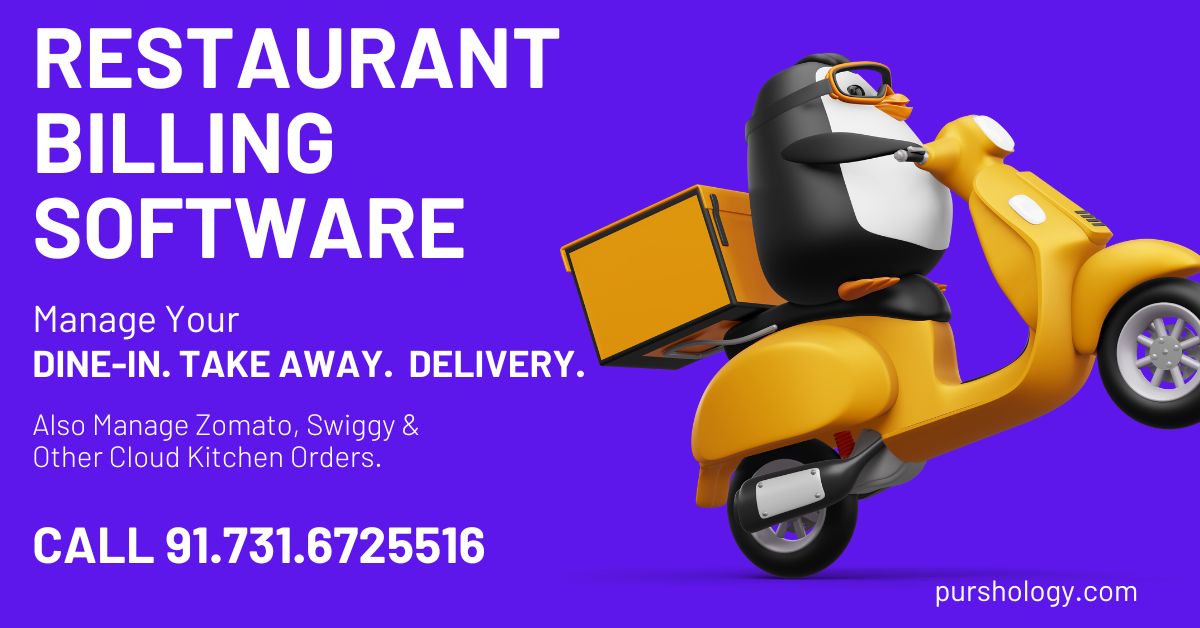Whether you are running a small business, startup, or enterprise, you must keep track of different metrics like net profit margin, customer retention, sales, etc., to understand your business’s growth. Customer Lifetime Value (CLV) is a crucial measure of customer experience for businesses. It shows the value and importance of a customer not based on a single purchase but throughout the entire course of their relationship.
Customer Lifetime Value helps estimate the total revenue a business can derive from a particular consumer. The longer the relationship is, the greater its lifetime value is to the business. As studies show that it costs 4 to 5 times more to acquire a new customer than to retain the existing one, businesses shed enormous focus on understanding the Customer’s Lifetime Value and working out ways to improve it.
In this blog, we have curated the subtle nuances of the Customer Lifetime Value, its importance, and its types. We have also added detailed guidance on calculating the lifetime value of a customer for a business.
Expert Advice
Customer Lifetime Value is something that businesses should not ignore. What is more important is ensuring the availability of reliable data and the usage of appropriate calculation methods. CRM software and ERP solutions are helping businesses curate data from all channels and make more reliable CLT estimates. They help businesses enhance customer loyalty, profits, and growth
What is Customer Lifetime Value (CLV)?
Customer Lifetime Value is the total revenue a business can expect or derive from a customer as long as the association stays intact. In other words, it is the value of a customer across the entire lifetime of the relationship. It takes into all the transactions with that particular customer to determine their contribution to the business.
Because retaining an existing customer is always less expensive than acquiring new ones, businesses attach more importance to this metric. A higher CLV means that your business has generated more loyal customers. CLV helps businesses make crucial decisions about sales, product development, marketing, customer relationship management, etc. They can design marketing and product strategies like upselling, cross-selling, etc.
The Customer Lifetime Value of a business helps understand how much you should invest in marketing and customer acquisition. Ideally, the CLV should be greater than the cost of acquiring a customer. This defines the health of a business and the returns on acquisition spending.
You can break down customers based on the Customer’s Lifetime Value and identify customers who are of great importance to the business. You can design marketing and strategies accordingly. Businesses offer discounts exclusively to customers who have been with them for a longer period of time. You can also analyze the results of your marketing efforts by segment. This helps understand what strategies work well for high-value customers. You can also replicate the same to other segments so they eventually turn into long-term customers with high value.
Why Is Customer Lifetime Value Important?
Customer Lifetime Value is crucial in helping businesses identify high-value customers and target them with exclusive discounts and offers. In this section, we have listed other reasons why Customer Lifetime Value is a vital measure for a business.

1. CLV Helps Spot and Stop Customer Attrition
When you prioritize customer lifetime value metrics, you can spot irregularities in the trend and sort them out quickly. For instance, if you find the CLV to be dropping over a specific period of time, you can churn out customer loyalty programs and marketing campaigns to reverse the trend. This helps reduce customer attrition, enhance the lifetime value of a customer, and improve customer loyalty.
2. CLV Helps Increase Revenue and Profits
The higher the lifetime value of a customer, the greater the business can earn from the relationship. A HubSpot study shows that a 5% rise in customer retention drives profits by 25% to 95% depending on the type of business. The Customer Lifetime Value analysis helps work out strategies to retain customers for longer and helps businesses broaden their revenues and profits.
3. CLV in Marketing Helps Target High-value Customers
With CLV, a business can identify how much a customer spends on purchasing your products and services over a specified period of time. This way, you can identify customers and add significant value to the business. When you know who is more valuable to your business, it becomes easy for you to tune your marketing strategies and sales efforts.
You can design exclusive offers and discount programs and target them toward your loyal customers. This helps improve the quality of your relationship, reduces attrition, and drives more sales and profits to the business.
4. CLV Helps Reduce Customer Acquisition Cost
Acquiring new customers is an expensive affair, irrespective of the scale and scope of your business. When you gain an understanding of the returns on your acquisition and marketing spend, you can tweak your strategy and spending.
You can either increase the spending or decrease them based on the CLV. For instance, you can spend more on acquiring high-value customers than the low-value ones. So this helps target and attract the right customers for your business at a lower cost, which drives your profits and offers a competitive advantage.
5. CLV Drives Informed Decision-making
Based on the lifetime value of a customer, you can make informed decisions when it comes to expanding the efforts and investment on marketing, sales, new product or service development, strategy, etc. It empowers you with insights that help you make reliable forecasts on inventory, manufacturing capacity, human resources planning, marketing, sales estimations, etc.
What are the Benefits of Customer Lifetime Value?
Following are some of the key benefits businesses can derive by determining the Customer Lifetime Value over a particular period.

1. Helps Scale your Customer Base
Your best and ideal customers are those that have a high Customer Lifetime Value. By determining the Customer Lifetime Value, you can identify the attributes of your high-value customers.
You should work out the following lines and figure out similarities in different data points to be able to personalize marketing and sales strategies. Ideally, you should figure out what is so common among customers with high customer lifecycle value.
Demographic Commonalities
- Do they come from the same geographic location?
- Do they carry similar income levels?
- What is their age? Do they fall under a specific age group?
- What is their predominant gender?
Transaction Commonalities
- What is their average purchasing timeline?
- What is the predominant payment method?
- What is the average price of their purchase?
You should ponder these questions and figure out the attributes of your ideal customer base. This helps tune your marketing campaigns, sales strategies, and acquisition efforts to target customers with similar attributes.
2. Minimizes your Spending and Costs
As explained earlier, it is always less expensive to retain existing customers than to spend on acquiring new ones. Also, businesses have a 60-70% chance of selling their product or service to an existing customer against only a 5-20% chance for a new prospect.
By calculating the lifetime value of a customer and figuring out the high-value customers, you can understand what it takes to keep them loyal. This way, you can spend more on retaining high-value customers and less on acquiring low-value ones. For instance, when you know that a customer would spend $500 on buying your products and not $5, you can optimize your marketing spend and acquisition budget.
Such a strategy helps minimize your acquisition costs and marketing spending and broaden the return on your costs.
3. Design Personalized Strategies
Customer Lifetime Value helps target a specific set of customers and design personalized marketing campaigns. For example, if you notice that your CLV is plunging and some customers are reluctant to renew their ongoing subscriptions, you can design targeted loyalty programs with rewards. This would motivate them to renew their subscription and continue the relationship with the business.
By tracking the lifetime value of a customer, you can easily design personalized strategies and target your high-value customers.
4. Promote Repeat Sales
You can build strategies that drive repeat sales by identifying and targeting high-value customers. This, in turn, helps maintain a healthy cash flow into the business and offloads a part of your financial burden.
5. Helps Scale your Business
Businesses drive more sales and build a loyal customer base by measuring consumer lifetime value and devising strategies. This, in turn, drives your profits and broadens your scope for further investments. With in-depth knowledge and insights about the attributes of your customer base, you can design and build new products, make hiring plans, or expand your manufacturing capacity.
6. Promote Customer Satisfaction
Customer Lifetime Value is a direct measure of the satisfaction of your customer base. If you have a high CLV, it means that your customers are happy and satisfied with your offerings. You can do more of what it takes to keep them happy and loyal. If you are pitching to an investor, you can highlight your CLV as a testimony to the loyalty of your customer base and the quality of your offerings.
What are the Types of Customer Lifetime Value Models?
When it comes to calculating the Customer Lifetime Value, there are two kinds of models and approaches.

- Historical Customer Lifetime Value models
- Predictive Customer Lifetime Value models
1. Historical Customer Lifetime Value models
In the historical approach, the lifetime value of a customer is calculated based on what the customer has spent on purchasing the products and services of a business.
There are two different model types under this approach.
In the aggregate approach, the Customer’s Lifetime Value is calculated as the average revenue per customer, taking the past/ historical transactions into account. It is the simplest of all approaches and presents a single value at the end.
In the cohort approach, customers are first grouped into cohorts based on different parameters like transaction dates, etc., and the average revenue is calculated for every cohort. This helps derive a CLV for each of the cohorts.
The historical approach considers revenue, transaction date, etc., while ignoring customer behaviors and preferences. So, the results are skewed and have limitations.
2. Predictive Customer Lifetime Value models
The predictive approach is not as simple as the historical approach. As the name suggests, it uses the data and trends on customer behavior and predicts retention to estimate the Customer Lifetime Value eventually. This model requires advanced AI tools and ML models.
There are two common approaches under predictive models, and they include the following.
In ML models, businesses use regression techniques, clustering, etc., to predict the lifetime value of a customer using historical data.
By fitting a probability distribution to your data, you can estimate the number of transactions and the value of each transaction.
These models consider data on customer acquisition costs, frequency of purchase, overheads, etc., to predict the CLV. Though this method may seem more complex than the historical approach, the predictions help make informed decisions on customer acquisition budgets and marketing strategies.
Customer Lifetime Value Formula
Typically, the Customer Lifetime Value is calculated as the product of customer value and average customer lifespan.
The customer lifetime value formula is given below.
Customer Lifetime Value = Customer value * Average customer lifespan
The formula helps you derive the average revenue that you can expect from a customer throughout their relationship or retention period.
Here the customer value can be calculated as the product of number of purchases a customer makes and the average transaction value.
Customer value = Average frequency rate* Average value of a transaction
The average customer lifespan is the retention period of a customer.
How to Calculate Customer Lifetime Value (CLV) in 5 Steps?
Following are the steps you must follow for Customer Lifetime Value calculation based on the CLV formula mentioned in the previous section.
1. Calculate the Average Value of a Transaction
The first step in the Customer Lifetime Value calculation is to determine the average value of a transaction. If you are accounting for a year, then calculate the average value of each purchase made by the customer during that year.
For example, if a customer spends $50 purchasing your product or service twice times a week, then the average value of a transaction is $25. You should do this for all the customers associated with your business.
Finally, you should add the averages and divide the value by the total number of customers you served during that period to determine the average value of a transaction.
2. Calculate the Average Frequency Rate
The second step in calculating the lifetime value of a customer is to estimate the average frequency rate of purchase of a customer. In other words, it is the number of times a customer visits your store and makes a purchase within a specified period of time.
If a customer visits the store twice a week for the entire year, then the average frequency rate of that customer is 2*52 (number of weeks in a month), which will be 104.
3. Calculate the Customer Value
The third step in Customer Lifetime Value calculation is to estimate the average customer value. Here, you must multiply the average value of the transaction and the average purchase frequency rate for every customer to figure out the value of that customer. You should sum this for all customers and then divide it by the number of customers to arrive at the average customer value.
4. Calculate the Average Customer Lifespan
The average customer lifespan is the number of years a customer visited the store during his/her lifetime. Say, for example, if a customer visited the grocery store 2 times a week for 5 years, then the average customer lifespan or the retention period of that customer is 5 years.
You can also calculate this as 1 divided by the attrition or churn rate.
5. Calculate the Customer Lifetime Value (CLV)
The final step is to calculate the Customer Lifetime Value, which is a product of average customer value and average customer life span or retention rate.
So, if an average customer visits your store twice a week for the entire year and spends $250 on average for a period of 5 years, then the lifetime value of a customer is calculated as follows.
Average customer value = $25 (Average transaction value in $)* 104 (average purchase frequency rate) = $2600.
CLV = $2600 (Average customer value) * 5 (average customer lifespan).
The CLV in this example is $13,000.
Customer Lifetime Value Examples
The easiest way to gain an understanding of the CLV calculations is to learn through examples. We have curated examples from different industries to deepen your understanding.
1. Restaurants
Restaurants serve as an effective, easy starting point to understand how Customer Lifetime Values are calculated in reality, as all of us are familiar with their operational nuances.
Suppose a typical customer visits the restaurant twice a month for every year, and the average purchase value is $100 over an average of 10 years. Then the lifetime value of a customer is calculated as follows.
Average customer value = $100 (Average transaction value in $)* 24 (annual visits or average purchase frequency rate) = $2400.
CLV = $2400 (Average customer value) * 10 (average customer lifespan) = $24000
2. Electronics showroom
Electronics showrooms have lower purchase frequency but a higher purchase value. Suppose a typical customer visits the store once every two years, and the purchase value averages $5000 every time for 10 years. Then the CLV is calculated as follows.
Average customer value = $5000 (Average transaction value in $), = $25,000.
CLV = $25,000 (Average customer value) * 10 (average customer lifespan) = $250,000
3. Software as a Service (SaaS) subscription
Let’s consider CLV in the case of a software company that offers multiple subscription packages to its clients. Suppose an average client spends $50 a month, and the average subscription period is 3 years. Then the Customer Lifetime Value is calculated as follows.
Average customer value = $50 (average purchase value) *12 (annual purchases) = $600
Customer Lifetime Value = $600 (Average customer value) * 3 (years) = $1800.
What are the Challenges of Customer Lifetime Value?
As much as calculating the Customer Lifetime Value is important for businesses, they also endure some challenges in the calculation. We have listed the predominant challenges that businesses experience while calculating the customer lifetime value for your reference.

1. It Can be Difficult to Calculate
Calculating CLV may become complex if you don’t have reliable customer data. To arrive at a solid estimate, you need data about customer preferences and behaviors, transactions, purchase frequency, etc. You must have a proper mechanism in place to collect and monitor customer data.
Investing in Enterprise Resource Planning (ERP) systems or Customer Relationship Management (CRM) software packages is the key to arriving at a reliable CLV estimate.
2. High-level Results may be Skewed
Using high-level data to calculate the CLV may yield a misleading picture of the health of your business. To solve this, you must disaggregate the available data based on location and other factors. You must note that the Customer Lifetime Value is more accurate and reliable when you do the calculation on a specific customer segment than doing it on your entire customer base.
3. You Must Make Reliable Assumptions
Calculating the Customer Lifetime Value demands mathematical models that, in turn, require assumptions about customer behavior, preferences, etc. The accuracy of the assumptions that you make impacts the results of the model.
The key is to choose an appropriate model and make reliable assumptions depending on the nature of your business to enhance the accuracy of your estimates.
4. It Can be Difficult to Choose the Right Time Horizon
Selecting an appropriate time period can be a challenging task when it comes to calculating the Customer Lifetime Value. It should be long enough to understand a customer relationship’s significance but not too long, as the estimations may become less reliable.
How to Increase Customer Lifetime Value (CLV): Pro Tips
Now that you know how the lifetime value of a customer works and its significance to a business. Here are a few essential tips that you must follow to increase the Customer Lifetime Value for your business.

1. Make it a Point to Deliver High-quality Customer Service
The easiest way to boost your Customer Lifetime Value is to enhance the quality of your customer service. A Salesforce study shows that 89% of customers are likely to return and purchase more when they experience a positive customer experience.
So, the key to improving your Customer Lifetime Value is to work out strategies that enhance the quality of customer service.
2. Offer Strategic Exceptions to your High-value Customers
Most brands that follow subscription-based models follow this approach. In case a high-value customer cancels the subscription service, offer them a discount so they can continue to stay with the business. Such strategic exceptions help reduce attrition and strengthen their loyalty.
3. Work out Strategies to Boost the Average Order Value
Have you noticed that when you are just about to check out from Amazon or other e-commerce stores, they present recommendations and discounts when you purchase as a bundle?
Some brands offer complementary products and services when you are about to check out. These cross-selling and up-selling strategies help boost the overall lifetime value of a customer. SaaS companies and other subscription-based businesses offer discounts on annual billing cycles, which in turn enhances the order value and the customer lifetime value.
4. Design Customer Loyalty Programs
Customer loyalty programs help keep customers hooked on to the business for long time. When you incentivize high-value customers, they are more likely to return, which boosts the purchase frequency rate and Customer Lifetime Value.
5. Build Effective Customer Onboarding Strategies
Customer onboarding plays a crucial role in promoting customer loyalty and enhancing CLV. This comes into play a few days after the customer signs up and makes the first purchase. Based on the data the customer provides, you should work out strategies to turn them into a recurring customer.
You can approach them through email or mobile number and seek feedback about their purchase. You can also offer personalized deals and curate recommendations based on their first purchase.
6. Invest in ERP and CRM Software
Deploying CRM (Customer Relationship Management) software can help you automate data collection and tracking. They are more effective than Excel Spreadsheets and paper forms. As the data is more accurate, they help identify high-value customers and workout strategies to enhance their CLV.
7. Simplify Returns
Return policies impact customer retention and loyalty. 90% of customers agree that a convenient, seamless return policy played a key role in deciding if they continue their association with the brand or make a future purchase decision. A smooth return process boosts customer experience, making customers more likely to return.
8. Simplify the Shopping Experience
The shopping experience plays a crucial role in promoting customer retention and the lifetime value of a customer. If you are running an e-commerce business, keep track of cart abandonment rates. On the other hand, determine what influenced customers to abandon the purchase if you own a brick-and-mortar store – was its packaging? Or bombarding them with too many choices?
Using the data, work out ways to simplify the shopping experience for your customers.
9. Seek Feedback from Customers
Businesses should seek feedback from customers after every purchase to ensure that the customers are happy with the purchase. If they are unsatisfied with the purchase, asking for feedback helps you understand their concerns and fix the issue. This helps improve customer satisfaction and gain loyalty.
10. Create Targeted Programs
Creating content and campaigns targeted to attract a specific segment of customers can help enhance the Customer Lifetime Value. You can reach them through a social media channel of their preference and create blogs, videos, podcasts, etc. This helps lower the costs and improve the returns on marketing spend.
Conclusion
Customer Lifetime Value plays a pivotal role in business decisions. It helps understand how much a customer adds to your business and determine which ones will likely remain loyal for longer. Simplifying the shopping experience, designing effective customer onboarding strategies, delivering high-quality customer service, seeking feedback, and investing in ERP or CRM software solutions help improve a business’s customer loyalty and CLV.
Frequently Asked Questions

Hiba is an accomplished specialist in writing for Software as a Service (SaaS) and has extensive experience crafting compelling and informative content. With over two years of experience, she has honed her skills in producing various forms of content, including articles, blog posts, and more, all centered around SaaS. Hiba is dedicated to sharing her insights to assist businesses in leveraging SaaS to achieve growth and success.
Need Any Technology Assistance? Call Pursho @ 0731-6725516





